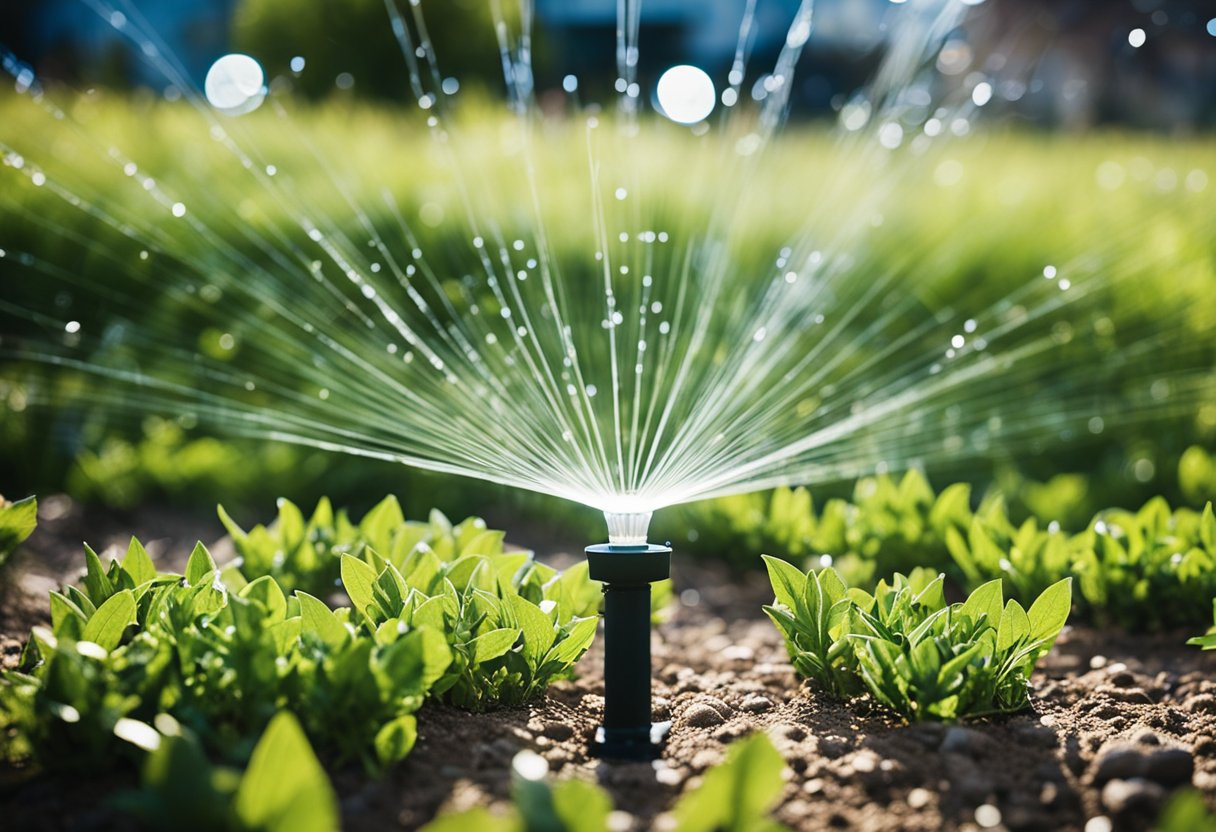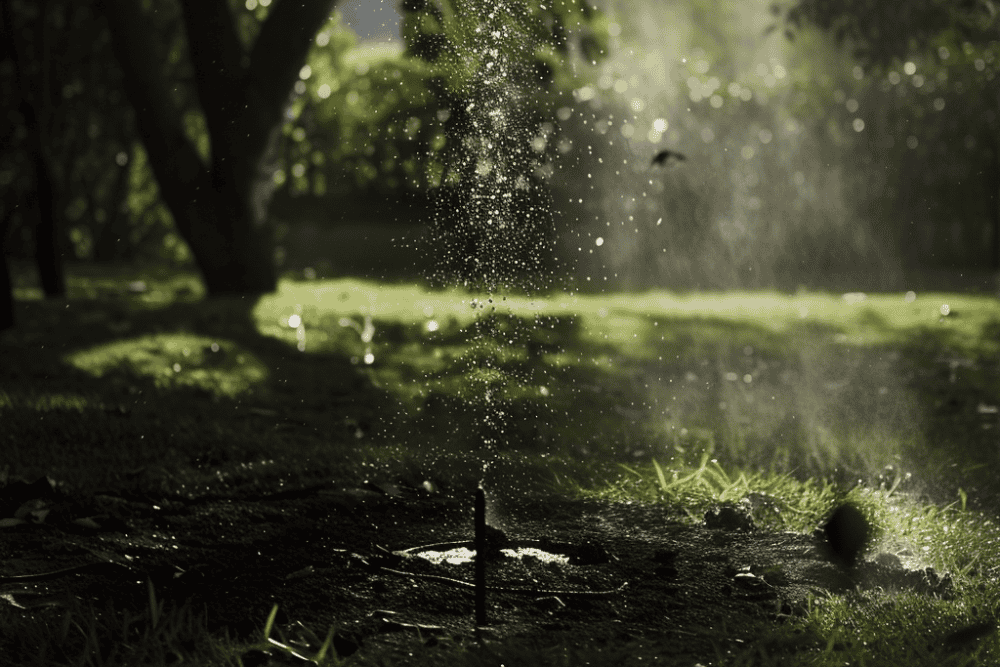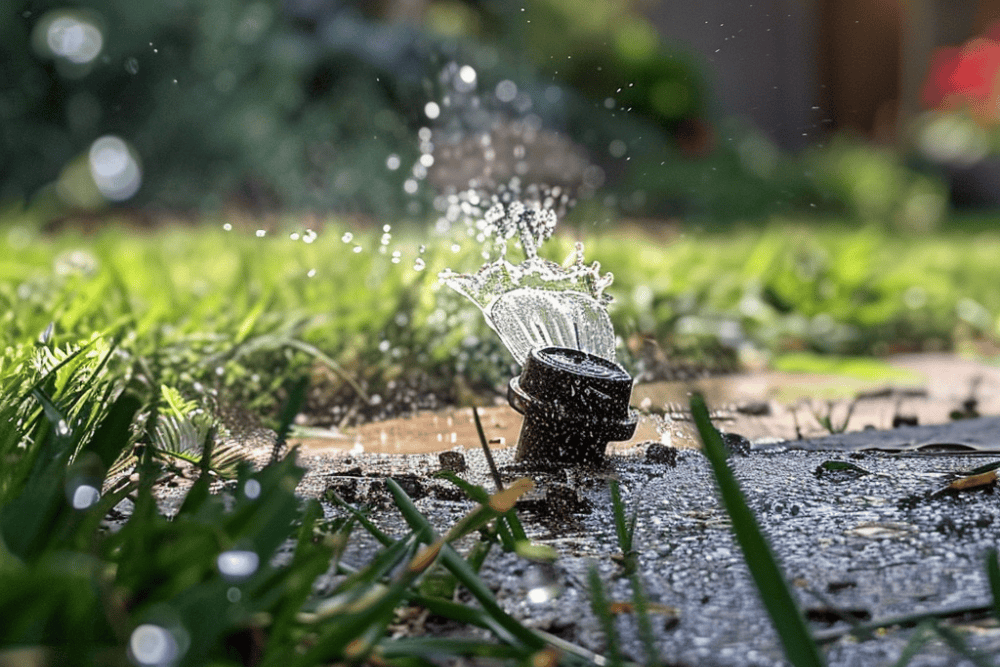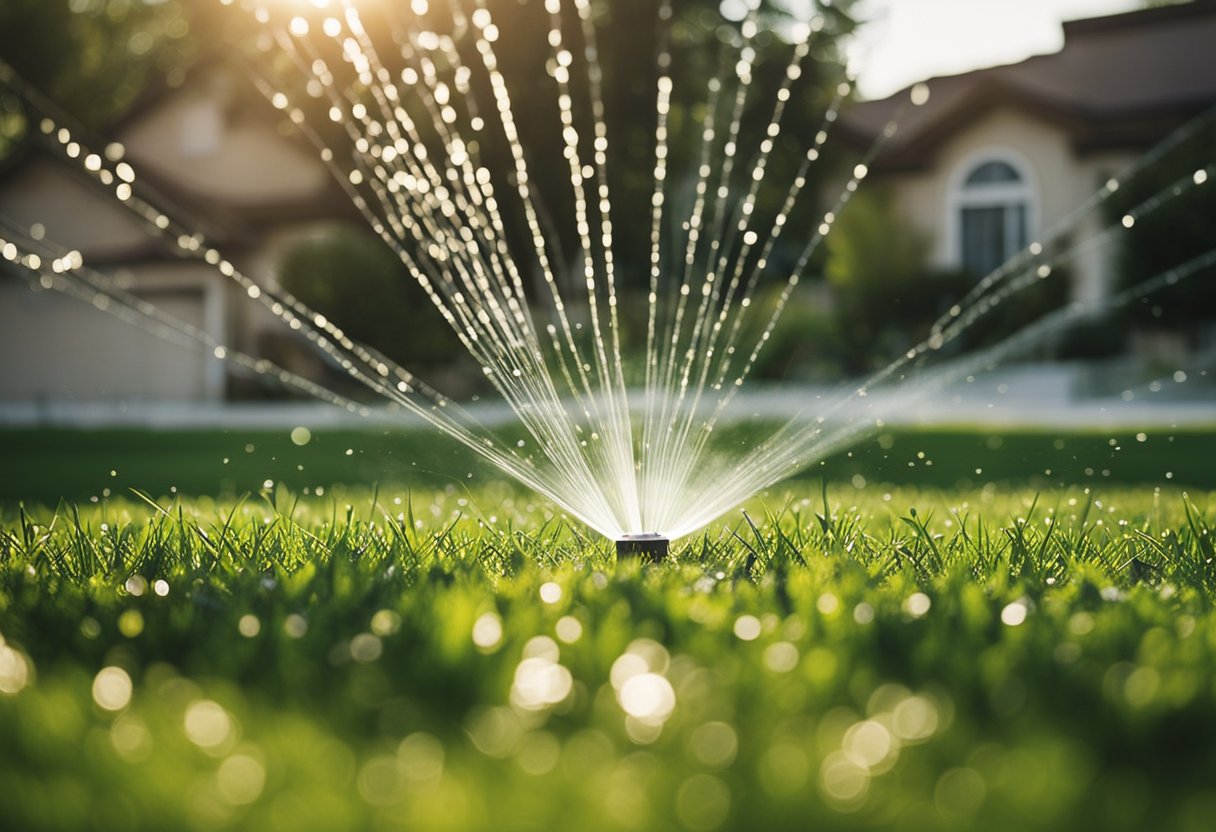Benefits of Automated Inground Sprinkler Systems
Efficient Water Usage
Automated inground sprinkler systems help in efficient water usage by only watering the lawn when needed, ultimately saving water. These systems feature smart timers and sensors that schedule irrigation according to weather conditions and specific yard needs.
No More Manually Moving Sprinklers Around Your Yard
Forget the hassle of manually dragging sprinklers around the property. Automated inground systems take care of the entire process for you, ensuring an evenly watered lawn with little effort.
No Messes and Unruly Hoses in Your Yard
An inground sprinkler system eliminates the need for garden hoses snaking across the yard. The system is neatly hidden underground, making the yard tidy and free from potential tripping hazards.
Targeted, Precise Water usage
These systems allow homeowners to divide their property into different irrigation zones, providing targeted and precise water usage for various plants and lawn areas. This targeted approach promotes healthy plant growth and eliminates under- or over-watering.
Advantages of Different Spray Patterns
Inground sprinkler systems offer a variety of spray patterns to cater to the diverse needs of residential gardens and landscapes. The flexibility in spray patterns helps ensure plants receive the appropriate amount of water, maintaining a lush and vibrant yard.
Types of Inground Sprinkler Heads
The Different Types of Sprinkler Heads and Their Applications
Fixed Spray Sprinkler Heads
Fixed spray sprinkler heads deliver a constant spray pattern to a specific area. These heads work well for smaller areas and are often used in commercial settings for precise watering.
Fixed spray heads come in various patterns, such as full circle, half circle, and quarter circle, to accommodate different lawn shapes. To ensure efficient lawn watering, it’s essential to choose the right spray pattern for your landscape.
Flood Sprinkler Heads
Flood sprinkler heads, also known as bubbler heads, are designed to saturate the ground quickly, allowing water to penetrate deep into the soil. They are ideal for tree wells, planters, and shrubs, where water needs to reach the root zone. Unlike other sprinkler heads, flood heads do not spray water but instead create a small area of concentrated water flow, usually less than 5 feet wide.
Pop Up Sprinklers
Pop-up sprinklers are popular for residential and commercial applications due to their versatility and ability to retract when not in use. They are effectively hidden from view, reducing the chances of damage from lawn mowers, foot traffic, or other outdoor activities. Pop-up sprinklers provide even watering coverage and are available in various heights to suit different needs, such as taller grass or flower beds.
Rotary Sprinkler Heads
Rotary sprinkler heads are known for their ability to disperse a large amount of water over a wide area. These heads rotate, distributing water in an arc pattern, making them suitable for covering more extensive lawns efficiently.
Rotary heads come in many styles, such as impact, gear-driven, or turbine-driven, catering to a range of commercial and residential applications. It’s important to select the right rotary head type for your specific landscape to maintain optimal watering levels.
Irrigation Controller Dashboards
Irrigation controller dashboards help manage inground sprinkler systems in Grand Junction, Colorado. They offer advanced features and user-friendly interfaces for efficient water use. Innovative irrigation services rely on these controllers to enhance the overall performance of irrigation systems.
Highly Programmable
Irrigation controllers have become highly programmable, allowing users to customize watering schedules for various zones. This feature ensures efficient use of water resources, adhering to Water Wise Rules. With multiple start times and watering days, these controllers offer flexibility, catering to the specific needs of each landscape.
Rain Sensor Features
To further save water, controllers come equipped with rain sensor features. These sensors detect rainfall and automatically pause irrigation schedules. Once rain stops, the irrigation system returns to its programmed schedule. This integration ensures that plants receive an adequate water supply, and no water is wasted during rainfall.
Separate Timer Settings for Each Zone
Controllers allow separate timer settings for each zone, ensuring tailored care for different plant types. This feature enables users to optimize watering durations depending on plant needs, soil type, and sun exposure. By adjusting the timer settings, users can maintain the health of their landscape while conserving water.
WiFi and App Control
Many irrigation controller models now offer WiFi and app control, making it easy to manage sprinkler systems on-the-go. Users can monitor and adjust watering schedules remotely from a smartphone or tablet. This remote access helps detect issues, make timely adjustments, and ensure an efficient irrigation system.
Sprinkler System Installation Process
The following details how your sprinkler system contractor will install your sprinkler system.

Designing Separate Watering Zones for Your Lawn
First, to ensure a healthy and well-watered lawn, it’s essential to create separate watering zones. Your contractor will design the sprinkler system to allow different areas of the lawn to receive the adequate amount of water based on their needs. Various factors, such as grass species and soil conditions, play a role in determining the optimal watering schedule for each zone.
Digging Trenches to Optimal Depth
The next step in the sprinkler installation process is digging trenches to the optimal depth for the irrigation system. This depth is essential for protecting the pipes from harsh weather conditions and ensuring efficient water distribution.
Insert Pipes in Trenches

Trench for a sprinkler line along a planting area
Once the trenches are dug, it’s time to insert the pipes. For most inground sprinkler systems in Grand Junction, CO, PVC pipes are a common choice of sprinkler system contractors due to their durability and ease of use. Carefully lay out the pipes, making sure they connect and run smoothly throughout the entire irrigation system.
Connect to a Water Source and Install the Zone Valves
After laying the pipes, your contractor will connect the system to a city water source or another appropriate water source available in the area. Zone valve installation in the designated watering zones comes next. These valves are critical components, as they regulate the water flow to each zone and ensure proper watering schedules.
Connect Pipes to the Valve Box
Once the zone valves are in place, pipes are connected to a central valve box. This box serves as a crucial hub to control the entire sprinkler system. It enables easy access for potential irrigation repairs and maintenance.
Connect Sprinkler Heads and Drip Irrigation to Pipes and Establish Wiring
Now, it’s time to attach the sprinkler heads and drip irrigation components to the pipes. These elements are responsible for the actual water distribution throughout the lawn. Proper wiring is also necessary to connect every sprinkler head and drip irrigation part to the control box, ensuring efficient communication and overall system functioning.
Connect Your System to Controller
The final step in the installation process is connecting the sprinkler system to a digital or manual controller. This device allows you to program specific watering schedules for each zone, ensuring consistent and optimal lawn care. Customizing the settings to accommodate your lawn’s unique needs is the key to a lush, healthy landscape.
Sprinkler System Maintenance and Repairs

A Faulty Sprinkler Head Nozzle Shooting Water Straight up Into the Air
Maintaining your inground sprinkler system is essential in Grand Junction, Colorado. Regular upkeep ensures efficient watering and prevents problems that can lead to costly repairs. Your contractor will describe to you how to do routine maintenance if you are DIY oriented. Your contractor of course can do the routine maintenance along with any overhauls that may be necessary down the road.
Replacing Damaged Sprinkler Heads
A common issue in sprinkler systems is broken or damaged sprinkler heads. Replacing them is vital to maintaining an efficient and effective irrigation system. Signs of a damaged sprinkler head include poor water distribution, leaks, and uneven spray patterns.
To replace a broken head, turn off the water supply and carefully remove the faulty unit. Install the new head, making sure it’s secure and level with the ground. Once complete, test the system to ensure proper function.

Kids, Pets and Lawn Mowers Sometimes Result in Sprinklers Needing to be Repositioned or Repaired
Winterization of Your Inground Sprinkler System
In Grand Junction, winterizing your inground sprinkler system is crucial to avoid damage from freezing temperatures. Neglecting this step can lead to burst pipes and costly repairs. This process is best handled by local sprinkler system contractors, but the general steps are provided below.
- Turn off the water supply: Shut off the main water valve to prevent water from entering the sprinkler system.
- Drain the pipes: Open valves and drain plugs to remove any remaining water from the system. This step may require a professional’s help if you have an automatic drain or air compressor.
- Insulate the valves and backflow preventer: Wrap these components with insulation to protect them from freezing temperatures. You can use foam insulation tape or a specially designed insulating cover.
- Document the process: Record the steps you took to winterize your system, including the locations of valves and drains. This information will be helpful when it’s time to restart the system in spring. It will also help you to go through the winterization process more quickly and efficiently in the fall.
Winterizing your inground sprinkler system helps prolong its life and avoid costly repairs.
While you need to winterize your sprinkler system, many of your plants and trees still need water during the mostly dry winter months here in Grand Junction. A good resource on how to provide adequate water to the plants that need it in the winter months when you don’t have access to your sprinkler system, you’ll want to check out the Fall & Winter Watering practices published by the city of Grand Junction.
Frequently Asked Questions

How Much Does it Cost to Install a Sprinkler System in Grand Junction, Colorado?
The cost of installing a sprinkler system can vary depending on various factors such as yard size, soil type, and the type of system being installed. The national average sprinkler system installation cost including parts and labor is around $2,500. This cost can vary widely depending on the requirements of your property and can go as low as around $1,500 to $4,000 or more.
How Long Does it Take to Install an Inground Sprinkler System?
The time to install an inground sprinkler system depends on the size of the area and the complexity of the project. Generally, smaller yards might take 1-2 days, while larger areas may take up to 4 days or more.
How Deep Should Sprinkler Pipes be Buried?
Sprinkler pipes should typically be buried between 6 to 12 inches deep. This depth helps protect the pipes from damages due to foot traffic, and lawn care equipment. You will have to drain the pipes during the winter as the frost depth in Grand Junction is between 30 and 40 inches.
What Kind of Permitting is Required for Sprinkler System Installation in Grand Junction?
In Grand Junction, a permit may be needed for installing a sprinkler system. The specific requirements might differ depending on project size and other factors. Your contractor will be familiar with any permit requirements in both Mesa County and the City of Grand Junction.
Are There Outdoor Watering Restrictions in Grand Junction I Should be Aware of?
Yes, depending on weather conditions, there are frequently outdoor watering restrictions in Grand Junction, CO during the summer months. These restrictions help conserve water and may affect how and when you can water your lawn or garden. It is essential to consult the official City of Grand Junction website to stay updated on the latest watering restrictions.
Sprinkler Systems
Clear Your Property of Excess Debris and Improve Your Curb Appeal

DIY Yard Care
Check out our blog for information on how to do upkeep around your yard. Tips and tricks for keeping your lawn, plants and trees healthy.

Grand Junction Events Calendar
A monthly listing of the events for you and your family to enjoy in and around Grand Junction

COMPLETE LIST OF ALL SERVICES
All Services
Click a Link Below for More Information About Services Provided
Hardscaping
Curbing
Decks
Fence Maintenance & Install
Fire Pits
Landscape Lighting
Outdoor Kitchens
Patios
Pergolas & Gazebos
Retaining Walls
Walkways
Sprinkler Systems
General
Fall Cleanup-Leaf Removal
Landscape Design
Mulching
Organic Landscaping
Spring Cleanup
Water Features
Xeriscaping
Trees, Shrubs & Perennials
Flower Beds & Planters
Hedge & Shrub Trimming
Stump Grinding
Tree Planting
Tree Removal
Tree Trimming & Pruning
Lawn Maintenance
Lawn Aeration
Lawn Dethatching
Lawn Edging
Lawn Fertilization
Lawn Mowing
Pest Control
Weed Control
Drainage Issues
Sod & Turf
LET’S GET STARTED
Contact Us
West Slope Landscaping Lynx
Phone:
970.712.5471
Email:
operations@westslopelandscapinglynx.com
Hours:
Sun – Sat: 8am – 6pm